Solvent 647: composition characteristics
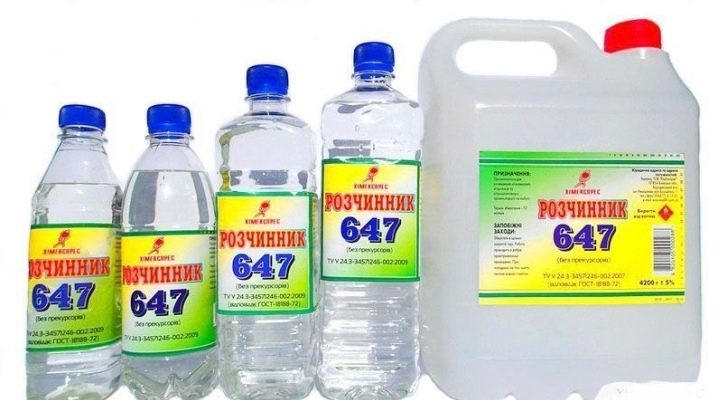
A solvent is a specific volatile liquid composition based on organic or inorganic components. Depending on the characteristics of a particular solvent, it is used for addition to coloring or varnishing materials. Also, solvent compositions are used to remove stains from paints and varnishes or dissolve chemical contaminants on various surfaces.
Peculiarities
The solvent can be made from one or more components. Recently, multicomponent formulations have gained the greatest popularity.
Typically solvents (thinners) are available in liquid form. Their main characteristics are:
- appearance (color, structure, consistency of the composition);
- the ratio of the amount of water to the amount of other components;
- density of the slurry;
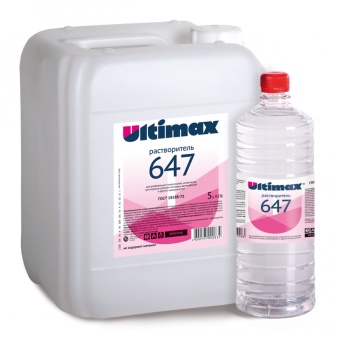
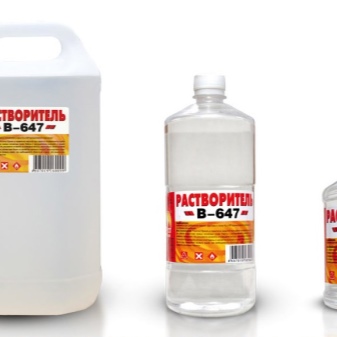
- volatility (volatility);
- the degree of toxicity;
- acidity;
- coagulation number;
- the ratio of organic and inorganic components;
- flammability.
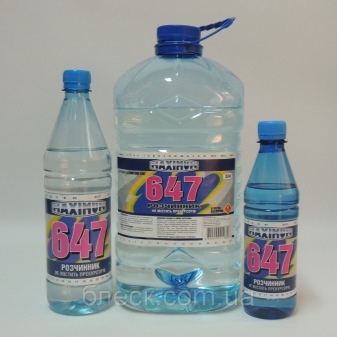
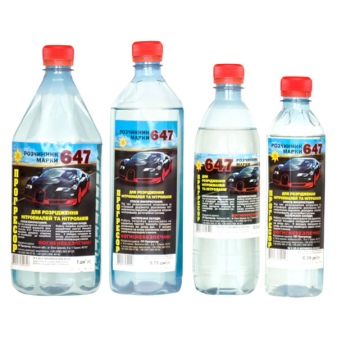
Dissolving compositions are widely used in various fields of industry (including chemical), as well as in mechanical engineering. In addition, they are used in the manufacture of footwear and leather goods, in the medical, scientific and industrial sectors.
Types of compositions
Depending on the specifics of the work and the type of surface on which the solvent will be applied, compositions are divided into several main groups.
- Thinners for oil paints. These are mildly aggressive compositions that are used to add to coloring materials in order to improve their properties. Turpentine, gasoline, white spirit are most often used for these purposes.
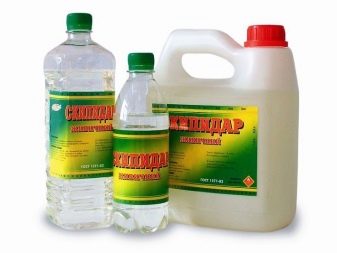
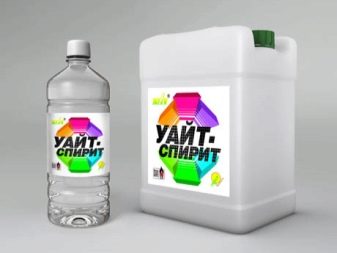
- Compositions intended for the dilution of bituminous paints and coloring materials based on glyphthalic (xylene, solvent).
- Solvents for PVC paints. Acetone is most often used to dilute this type of color.
- Thinners for adhesive and water-based paints.
- Weak solvent formulations for household use.
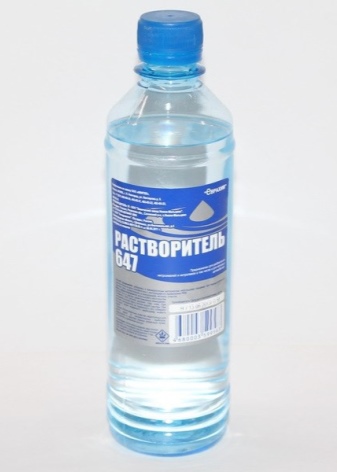
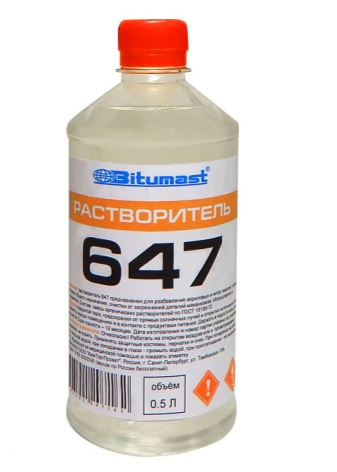
Features of the composition of the R-647
The most popular and widely used for various types of work at the moment are the R-647 and R-646 thinners. These solvents are very similar in composition and similar in properties. In addition, they are among the most affordable in terms of their cost.
Thinner R-647 is considered less aggressive and gentle on surfaces and materials. (due to the absence of acetone in the composition).
Its use is advisable in cases where a more gentle and gentle effect on the surface is required.

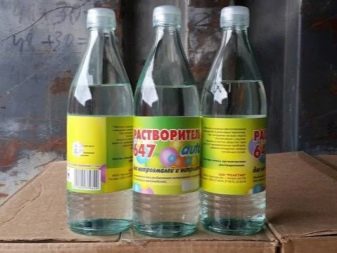
Often the composition of this brand is used for various types of bodywork and for painting cars.
Application area
R-647 copes well with the task of increasing the viscosity of substances and materials that contain nitrocellulose.
Thinner 647 does not damage surfaces that are weakly resistant to chemical attack, including plastic. Due to this quality, it can be used for degreasing, removing traces and stains from paint and varnish compositions (after evaporation of the composition, the film does not turn white, and scratches and roughness on the surface are noticeably smoothed out) and can be used for a wide range of works.
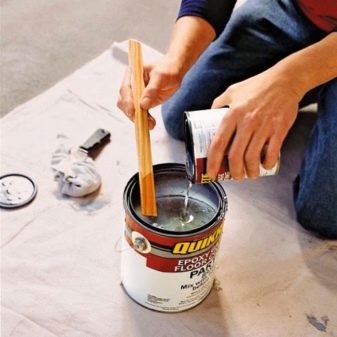

Also, the solvent can be used to dilute nitro enamels and nitro varnishes.When added to paints and varnishes, the solution must be constantly mixed, and the direct mixing procedure must be carried out strictly in the proportions that are indicated in the instructions. Thinner R-647 is most often used with the following brands of paints and varnishes: NTs-280, AK-194, NTs-132P, NTs-11.
R-647 can be used in everyday life (subject to all safety precautions).
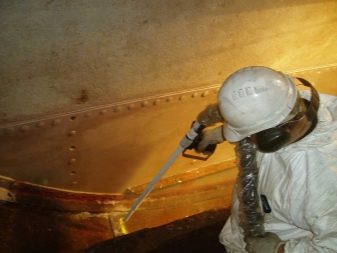
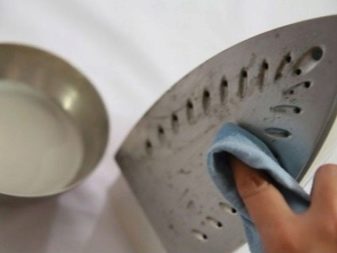
Technical properties and characteristics of the solvent composition of the R-647 grade in accordance with GOST 18188-72:
- The appearance of the solution. The composition looks like a transparent liquid with a homogeneous structure without impurities, inclusions or sediment. Sometimes the solution may have a slight yellowish tint.
- The percentage of water content is not more than 0.6.
- Volatility indicators of the composition: 8-12.
- The acidity is not higher than 0.06 mg KOH per 1 g.
- The coagulation index is 60%.
- The density of this dissolving composition is 0.87 g / cm. cub.
- Ignition temperature - 424 degrees Celsius.
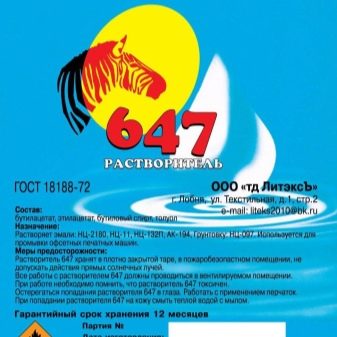
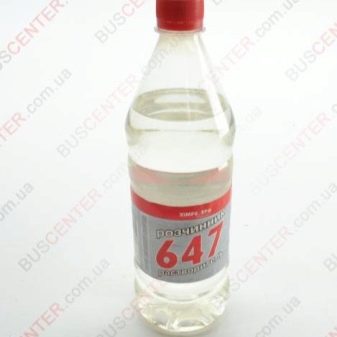
Solvent 647 contains:
- butyl acetate (29.8%);
- butyl alcohol (7.7%);
- ethyl acetate (21.2%);
- toluene (41.3%).

Safety and precautions
The solvent is an unsafe substance and can have a negative effect on the human body. When working with it, it is important to observe precautions and safety measures.
- Store in a tightly closed, fully sealed container, away from fire and heating appliances. It is also necessary to avoid exposing the container with the diluent to direct sunlight.
- The solvent composition, like other household chemicals, must be safely hidden and out of the reach of children or animals.
- Inhalation of concentrated vapors of the solvent composition is very dangerous and can cause poisoning. In the room where painting or surface treatment is carried out, forced ventilation or intensive ventilation must be provided.

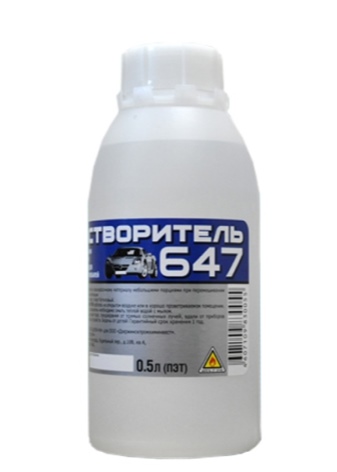
- Avoid getting the solvent in the eyes or on exposed skin. Work must be carried out in protective rubber gloves. If the thinner does get on open areas of the body, you must immediately wash the skin with plenty of water using soap or slightly alkaline solutions.
- Inhalation of high concentration vapors may damage the nervous system, hematopoietic organs, liver, gastrointestinal tract system, kidneys, mucous membranes. The substance can enter organs and systems not only by direct inhalation of vapors, but also through the pores of the skin.
- In case of prolonged contact with the skin and lack of timely washing, the solvent can damage the epidermis and cause reactive dermatitis.

- Composition R-647 forms explosive flammable peroxides if mixed with oxidants. Therefore, the solvent must not be allowed to come into contact with nitric or acetic acid, hydrogen peroxide, strong chemical and acidic compounds.
- Contact of the solution with chloroform and bromoform is fire and explosive.
- Spraying with solvent should be avoided, as this will quickly reach a dangerous degree of air pollution. When spraying the composition, the solution may ignite even at a distance from the fire.
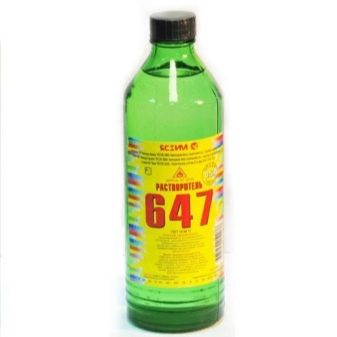
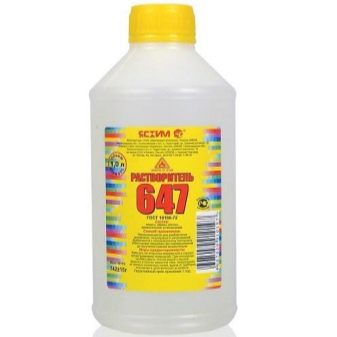
You can buy R-647 brand solvent in building materials stores or in specialized markets. For domestic use, the solvent is packaged in plastic bottles from 0.5 liters. For use on a production scale, packaging is carried out in canisters with a volume of 1 to 10 liters or in large steel drums.
The price for a solvent of the R-647 brand is on average about 60 rubles. for 1 liter.
For a comparison of solvents 646 and 647, see the following video.













The comment was sent successfully.